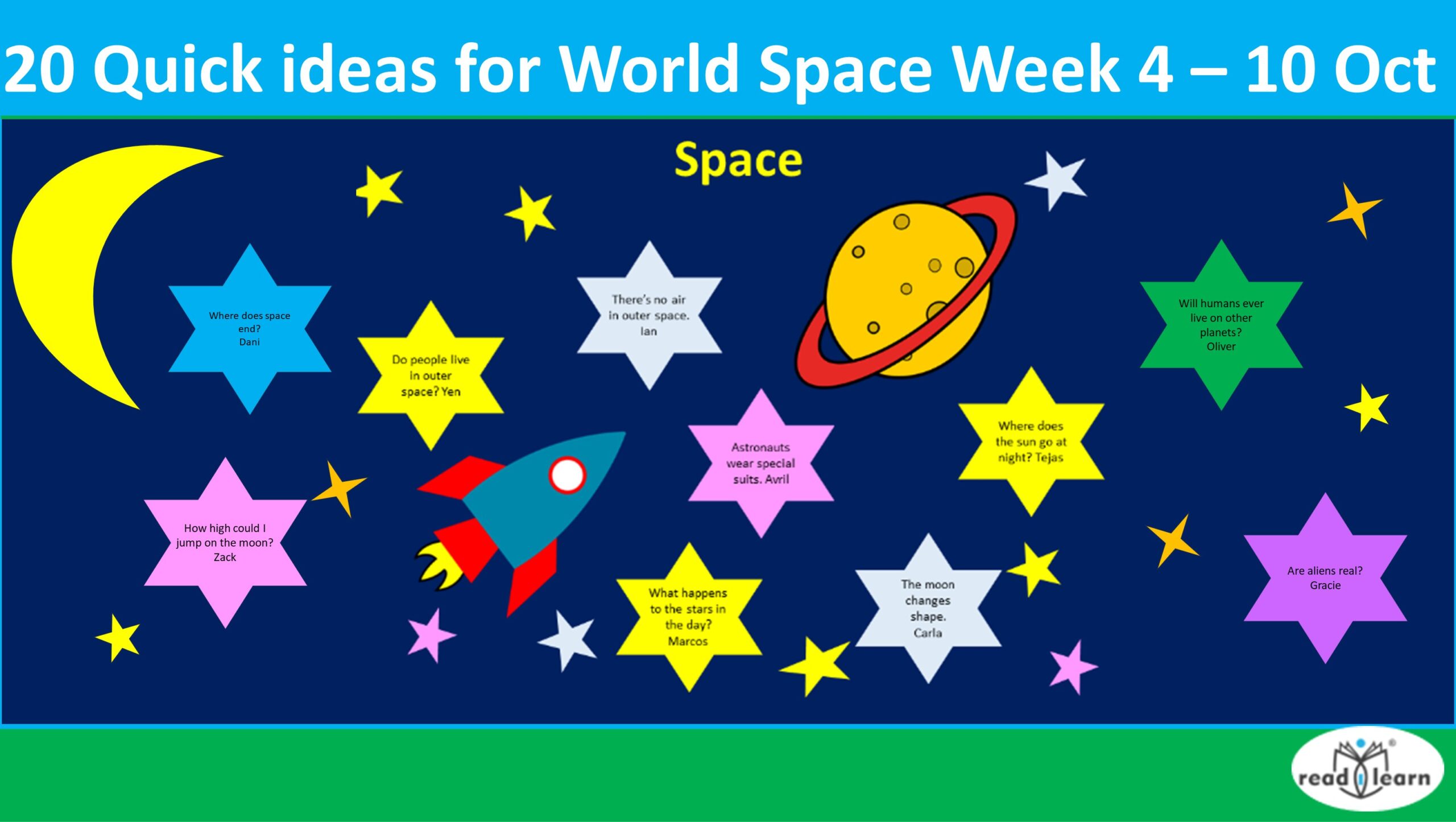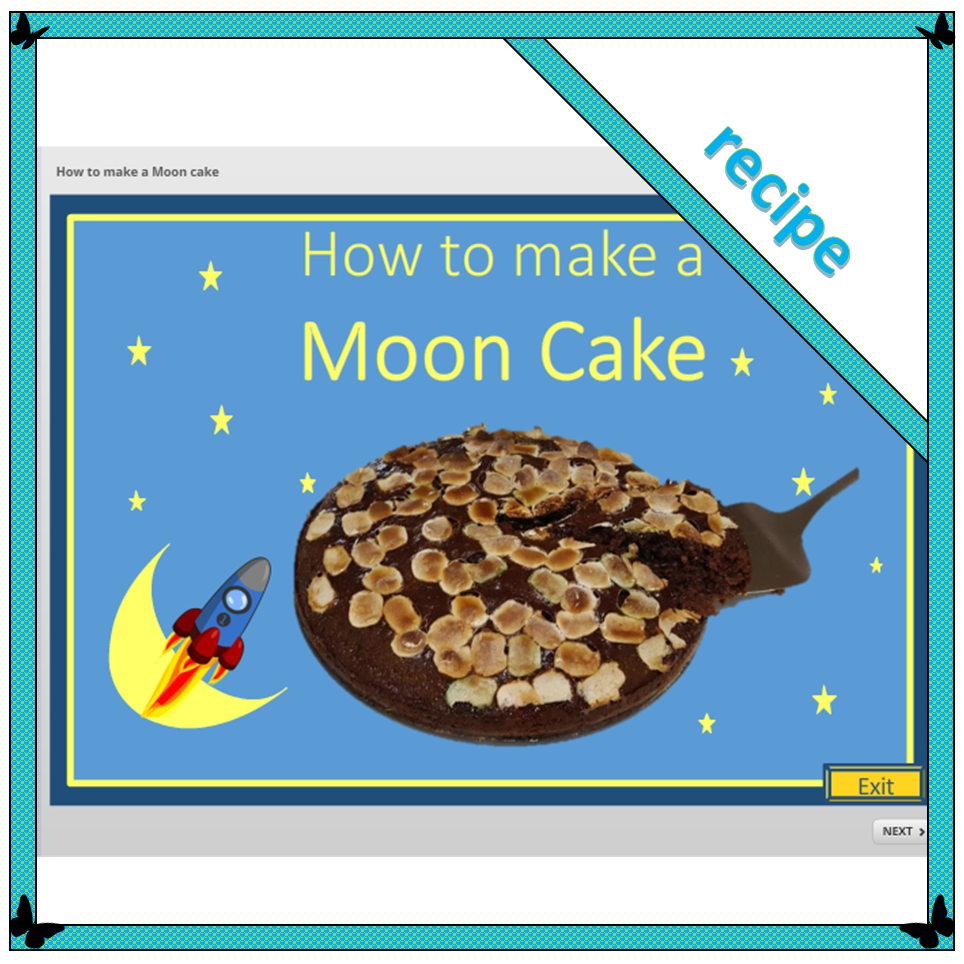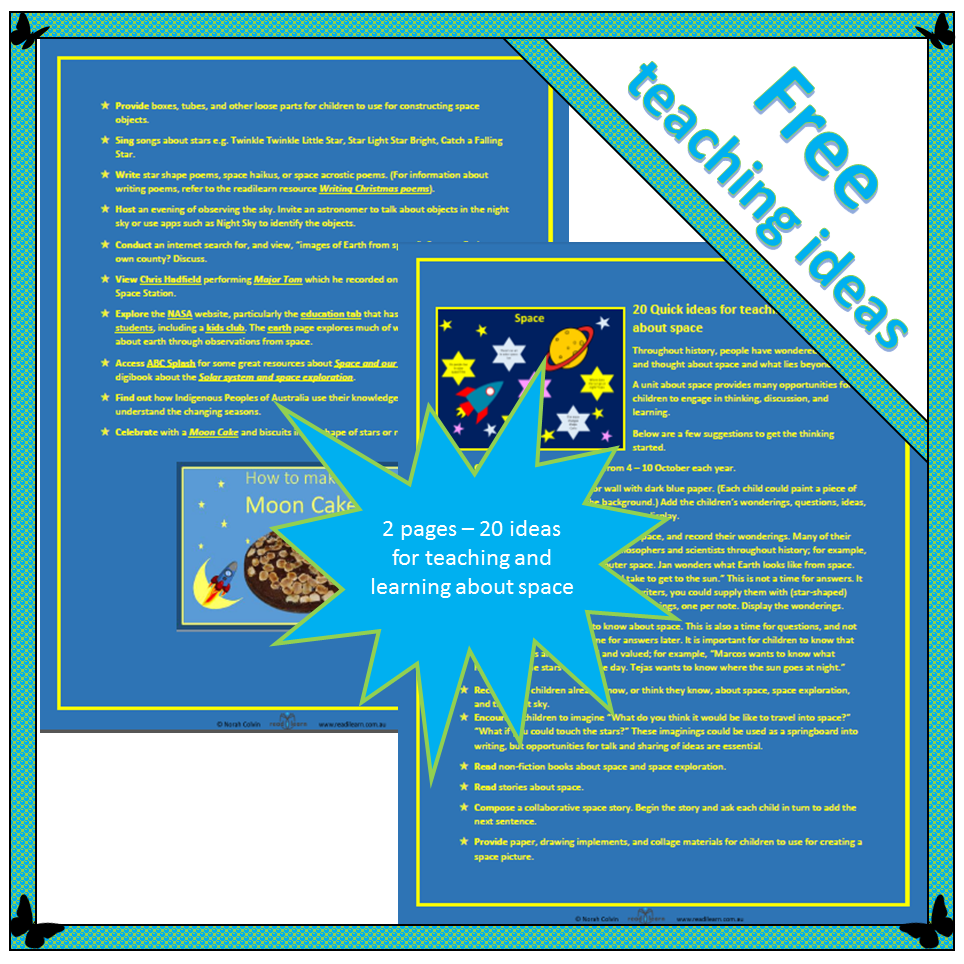Throughout history, people have wondered, imagined, and thought about space and what lies beyond.
A unit about space provides many opportunities for children to engage in thinking, discussion, and learning.
Below are a few suggestions to get the thinking started as you celebrate World Space Week from 4 – 10 October.
- Cover a large display board or wall with dark blue paper. (Each child could paint a piece of A3 paper to contribute to the background.) Add the children’s wonderings, questions, ideas, suggestions, pictures, and writing to the display.
- Ask children what they wonder about space, and record their wonderings. Many of their wonderings will match those of philosophers and scientists throughout history; for example, “Yen wonders if people live in outer space. Jan wonders what Earth looks like from space. Margot wonders how long it would take to get to the sun.” This is not a time for answers. It is a time for questions. If children are writers, you could supply them with (star-shaped) sticky notes on which to write their wonderings, one per note. Display the wonderings.
- Record what children want to know about space. This is also a time for questions, and not for answers. There will be time for answers later. It is important for children to know that their questions are both valid and valued; for example, “Marcos wants to know what happens to the stars during the day. Tejas wants to know where the sun goes at night.”
- Record what children already know, or think they know, about space, space exploration, and the night sky.
- Encourage children to imagine “What do you think it would be like to travel into space?” “What if you could touch the stars?” These imaginings could be used as a springboard into writing, but opportunities for talk and sharing of ideas are essential.
- Read non-fiction books about space and space exploration.
- Read stories about space.
- Compose a collaborative space story. Begin the story and ask each child in turn to add the next sentence.
- Provide paper, drawing implements, and collage materials for children to use for creating a space picture.
- Provide boxes, tubes, and other loose parts for children to use for constructing space objects.
- Sing songs about stars e.g. Twinkle Twinkle Little Star, Star Light Star Bright, Catch a Falling Star.
- Write star shape poems, space haikus, or space acrostic poems. (For information about writing poems, refer to the readilearn resource Writing Christmas poems).
- Host an evening of observing the sky. Invite an astronomer to talk about objects in the night sky or use apps such as Night Sky to identify the objects.
- Conduct an internet search for, and view, “images of Earth from space”. Can you find your own county? Discuss.
- View Chris Hadfield performing Major Tom which he recorded on board the International Space Station.
- Explore the NASA website, particularly the education tab that has pages for educators and students, including a kids club. The earth page explores much of what has been discovered about earth through observations from space.
- Access ABC Splash for some great resources about Space and our Solar System.
- Find out how Indigenous Peoples of Australia use their knowledge of twinkling stars to understand the changing seasons.
- Celebrate with a Moon Cake and biscuits in the shape of stars or rockets.
These ideas are available to download and print here. Enjoy!





